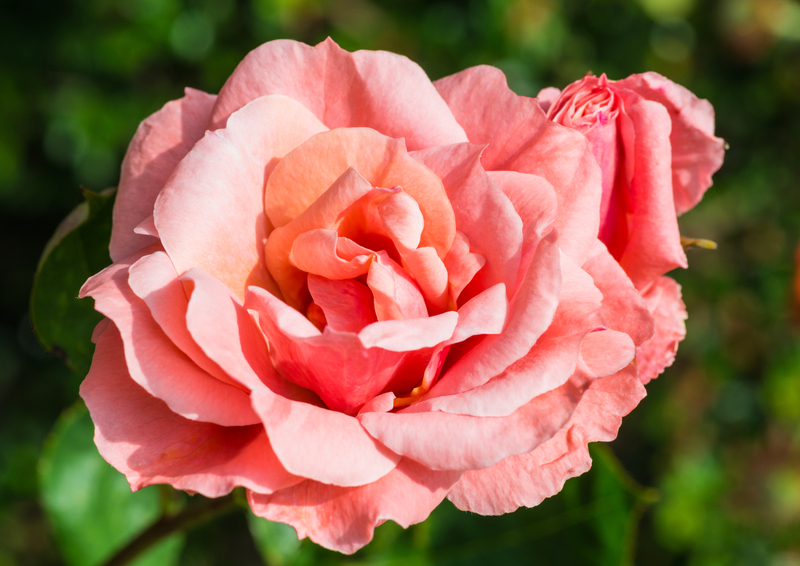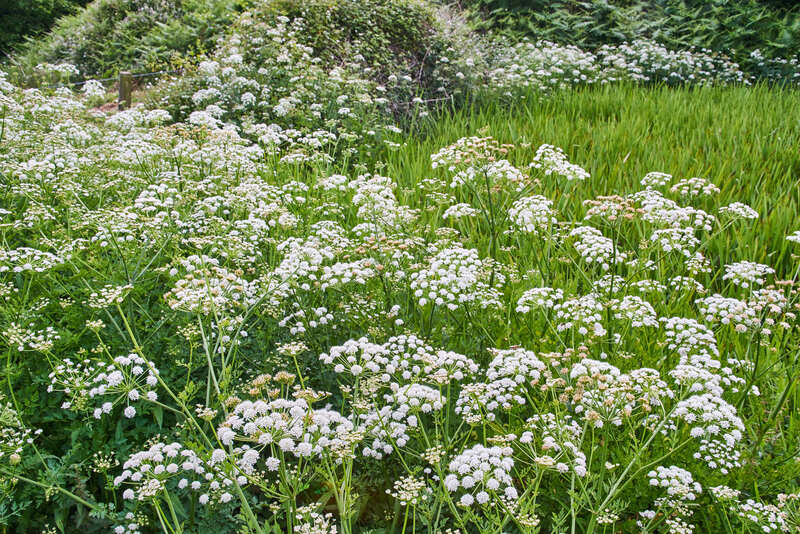Guiding your orchids to bloom with brilliance
Posted on 19/05/2025
Guiding Your Orchids to Bloom with Brilliance: A Comprehensive Care Guide
Orchids are among the most captivating and elegant flowering plants you can cultivate, yet even seasoned gardeners sometimes struggle to coax vibrant, lasting blooms from these bewitching beauties. If you're eager to witness your orchids bloom with stunning brilliance, you're in the right place. This guide delves into the best practices, expert tips, and essential insights for orchid care, maximizing blooms, and maintaining healthy orchids all year long.

Understanding the Basics: Orchid Types and Their Blooming Habits
There are more than 25,000 orchid species worldwide, but some of the most popular varieties for home growers include:
- Phalaenopsis (Moth Orchids): Known for their ease of care and long-lasting, elegant flowers.
- Cattleya: Famous for their large, fragrant blooms and vibrant colors.
- Dendrobium: Appreciated for their abundant blooms and striking appearance.
- Oncidium (Dancing Lady Orchids): Renowned for their profuse, airy clusters of flowers.
Understanding your orchid's species is crucial because each type has unique needs regarding light, water, and temperature. Guiding your specific orchid to bloom brilliantly starts with identifying its category and learning its natural habitat requirements.
Optimal Light: The Key to Energizing Orchid Blooms
Light Requirements for Flourishing Orchids
Light is the single most important factor in successfully encouraging orchids to flower. While most houseplants prefer direct sunlight, orchids thrive on bright, indirect light. Exposing them to harsh rays may scorch their delicate leaves, while insufficient light will halt blooming entirely.
- Phalaenopsis orchids prefer low to medium, filtered light. East-facing windows are ideal.
- Cattleyas and Oncidiums require more sunlight, ideally in a south or west window with a sheer curtain.
- Dendrobiums enjoy bright, indirect light and benefit from slight outdoor exposure in mild climates.
Tip: If your orchid's leaves are dark green, they may not receive enough light. Healthy, blooming orchids display light green, firm leaves.
Light Supplementation
In winter or in rooms with limited sunlight, you can use a fluorescent grow light placed 6-12 inches above the orchid for 12-16 hours daily. This encourages brilliant orchid blooms even in dim interiors.
Mastering Watering Techniques for Vibrant Blooms
Unlike other houseplants, orchids are susceptible to root rot if overwatered. On the flip side, they will refuse to bloom--sometimes for years--if kept too dry. Proper watering is crucial to guiding orchids to flower with brilliance.
- Phalaenopsis: Water weekly; allow medium to dry slightly between waterings.
- Cattleya and Oncidium: Allow potting mix to dry completely before watering again.
- Dendrobium: Likes to stay slightly moist but never soggy.
Water in the morning with room-temperature water, and always allow excess moisture to drain fully from the pot. Avoid letting your orchids sit in standing water, which is a common culprit in failed blooms.
Humidity Matters
Orchids thrive in humidity levels of 40%-70%. Indoor air, especially in winter, may drop far below this range. Place your orchid on a humidity tray, group several plants together, or run a room humidifier. Foliage and buds can also benefit from a gentle daily misting with non-chlorinated water.
Feeding for Blooms: The Right Fertilizer Strategy
The Role of Nutrients in Orchid Blooms
Orchids need a careful balance of nutrients to develop blossoms at their full potential. A specialized orchid fertilizer, ideally with a "20-20-20" balance diluted to half strength, is recommended. For maximum blooms:
- Fertilize every two weeks during the active growing season (spring-summer).
- Switch to "bloom booster" fertilizer (higher phosphorus) before and during flowering cycles.
- Omit fertilizing during dormancy (late autumn-early winter).
Avoid heavy-handed feeding, as excessive fertilizer can damage roots and impede flower production. Remember: gently nourishing your orchids is the path to brilliant blooms.
Temperature and Air Circulation: Encouraging Flowering Through Environment
To succeed in guiding your orchids to bloom with brilliance, it's vital to replicate their natural habitat. Most orchids favor warm daytime temperatures (65-80?F/18-27?C) and cooler nights (55-65?F/13-18?C), with a distinct drop of 10-15?F at night prompting flower spike formation.
Air movement is also crucial. Orchids in poorly ventilated environments often fail to bloom and may suffer from fungal or bacterial disease. Set up a small oscillating fan in your growing area, but position it to avoid direct drafts.
Rest Periods and Flower Induction
Some orchid varieties, particularly Cattleyas, Oncidiums, and Dendrobiums, require a defined cooling-off phase--or winter rest--to initiate flower spikes. Reduce watering, cease fertilizing, and ensure cooler temperatures at night. This cycle mimics their natural dormant period and jump-starts bloom production.
Repotting: A Key Step in Orchid Vitality and Flowering
Healthy roots mean healthy, blooming orchids. Every 1-2 years, you should repot your orchid to provide fresh, well-aerated orchid mix. Signs it's time to repot include:
- Tight, overcrowded roots forcing orchid out of its pot
- Sour, musty odor from decaying medium
- Slowed growth, root rot, or weak flowering
Select a container just barely wider than the root mass and always use appropriate orchid bark, sphagnum moss, or a specialized orchid blend. Vigorously blooming orchids enjoy space to breathe and grow.
Common Orchid Blooming Problems (and Their Solutions)
Why Won't My Orchid Bloom?
If your orchid seems healthy but isn't blooming, consider the following troubleshooting checks:
- Insufficient Light: Try moving to a brighter spot or supplement with grow lights.
- Watering Issues: Evaluate your watering schedule for under- or overwatering.
- Improper Feeding: Ensure regular fertilization with a suitable formulation.
- Lack of Temperature Drop: Encourage flowering by lowering nighttime temperatures for a few weeks.
- Pot-bound Roots: Repot to refresh nutrients and improve aeration.
Pest and Disease Management
Orchids are susceptible to pests like mealybugs, spider mites, and scale insects. Inspect plants regularly, isolate affected specimens, and treat promptly with insecticidal soap or neem oil. Remove any dead leaves, sterilize shears after use, and maintain strong air circulation to prevent fungal infections.
Supporting Orchid Blooms: Staking, Trimming, and Display
As your orchid's flower spike forms and matures, offer gentle support with a stake and soft tie. This protects the emerging stem from breakage and ensures upright floral displays. After your orchid's blooms fade:
- Trim the flower spike back to the second node: This may prompt a second flush of blooms in some species, especially Phalaenopsis.
- Remove dead blooms and old stalks: This tidies the plant and conserves energy for new flower production.
- Display with pride: Orchids thrive in attractive containers that provide stability, beauty, and proper drainage. Let your flowering orchid shine as a living work of art in your home.
Advanced Techniques for Bloom Success
Orchid Reblooming Tricks
- Temperature Manipulation: For stubborn orchids, reduce nighttime temperature by at least 10?F for two weeks to induce a stress response that triggers flowering.
- Spike Stimulation: For Phalaenopsis, after the first flower spike finishes, cut it above a healthy node--this encourages another bloom cycle from the same stem.
- Plant Hormones: Advanced growers sometimes use diluted cytokinins to promote flowering, but always follow label instructions to avoid plant harm.
Understanding Bloom Cycles
Orchid blooms last anywhere from 2 weeks to 6 months depending on species. After flowering, allow your orchid a rest period with reduced water and no fertilizer. Maintain patience--many orchids bloom annually, while others flower more than once per year with proper care.
Inspiring Varieties: Orchids for Spectacular Home Displays
- Phalaenopsis amabilis (White Moth): Classic, snowy white blooms that last for months.
- Cattleya maxima: The "Queen of Orchids," famed for breathtaking size and color.
- Oncidium Sharry Baby: Produces chocolate-scented blooms with vibrant hues.
- Miltoniopsis (Pansy Orchid): Offers a profusion of striking, pansy-like blossoms.
- Dendrobium nobile: Intense, fragrant clusters on cane-like stems.
Choose orchids with a blooming schedule that suits your home environment and your level of care commitment for a truly brilliant, year-round display.

The Orchid Grower's Quick Reference for Brilliant Blooms
- Provide bright, indirect light tailored to your orchid species.
- Water thoroughly, then let the potting medium dry out slightly between waterings.
- Use a balanced orchid fertilizer, diluted and applied regularly in growing season.
- Replicate natural temperature fluctuations--warm days and cool nights.
- Maintain high humidity and good air circulation.
- Repot every 1-2 years for healthy roots and maximum bloom potential.
Conclusion: From Bud to Bloom--Your Journey to Orchid Brilliance
Guiding your orchids to bloom with brilliance is a deeply rewarding journey, blending science, patience, and artistry. By mastering light, watering, feeding, climate, and attentive care, you'll enjoy a cascade of vibrant, long-lasting blooms that transform your home. Experience the quiet drama and intense beauty orchids offer--all possible when you nurture your plants with knowledge and dedication.
Ready to see your orchids reach their full blooming potential? Apply these expert care strategies, and watch your orchids become the centerpiece of any room, year after year. For more plant care tips and to connect with fellow enthusiasts, explore dedicated orchid forums and local botanical societies--your next brilliant bloom awaits!

